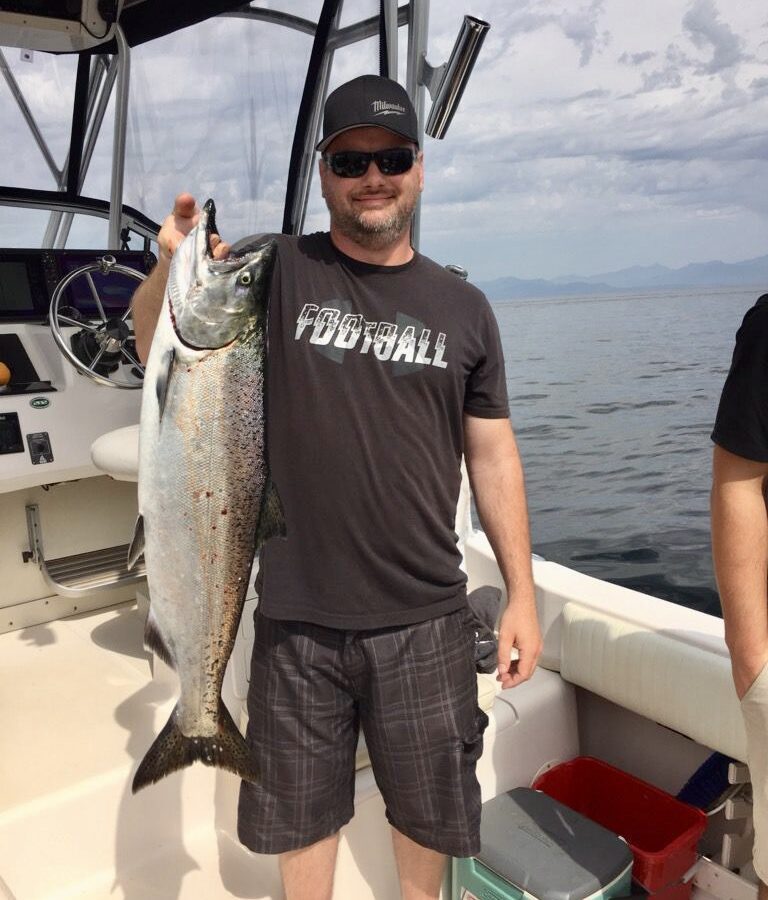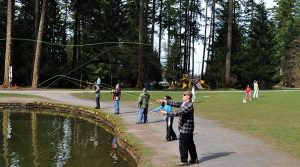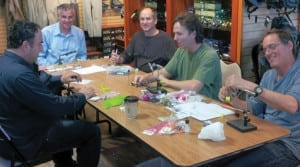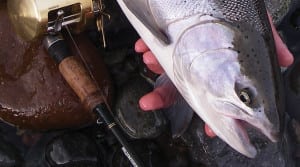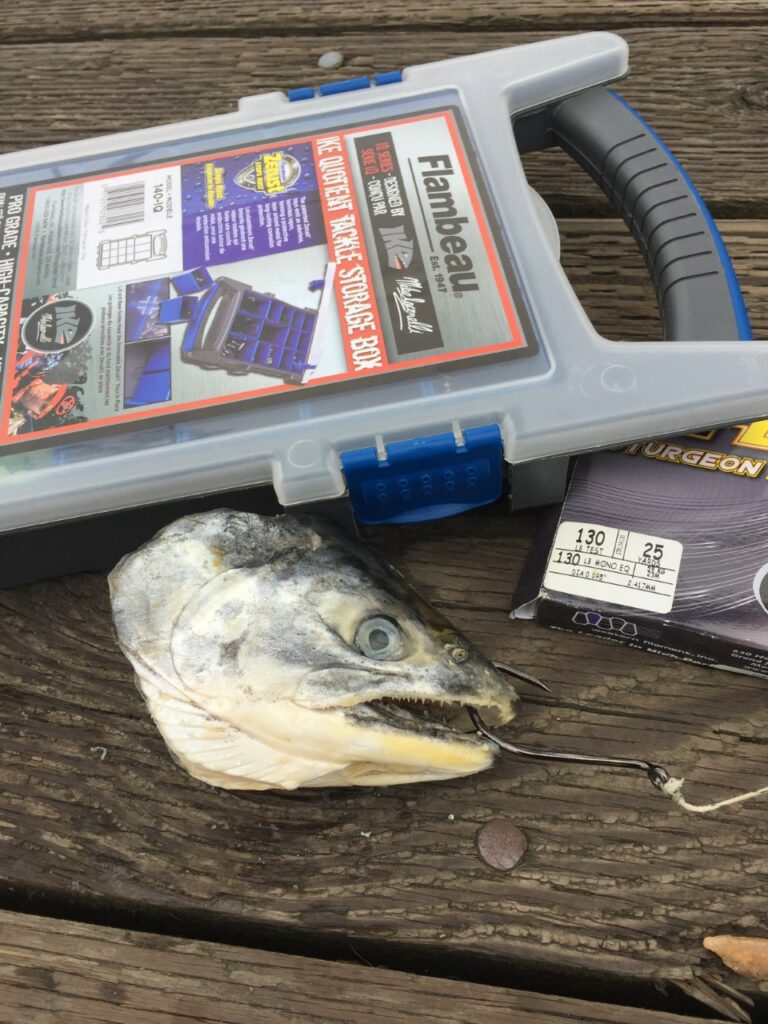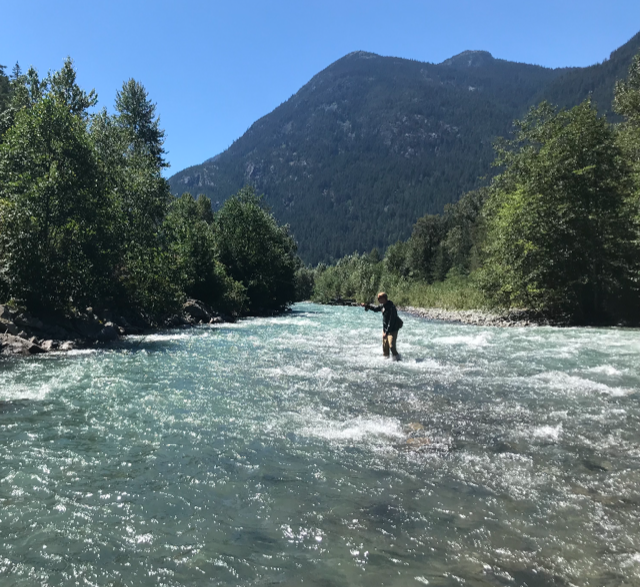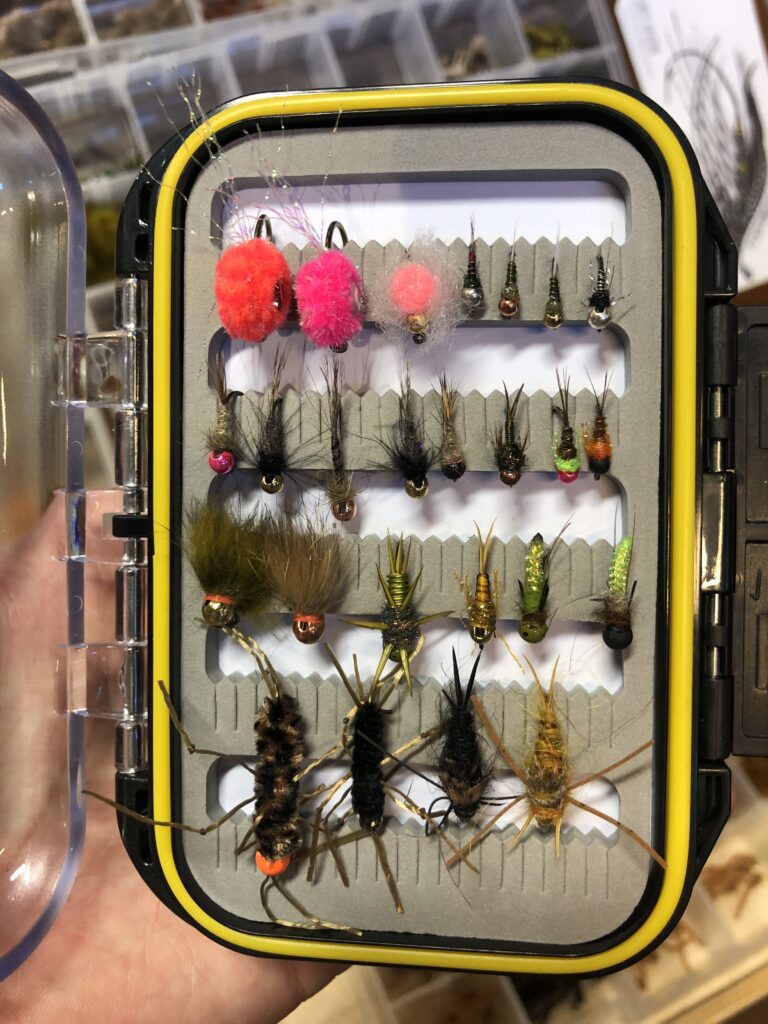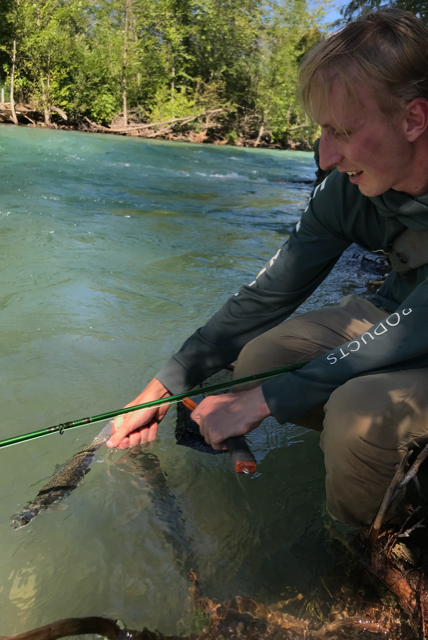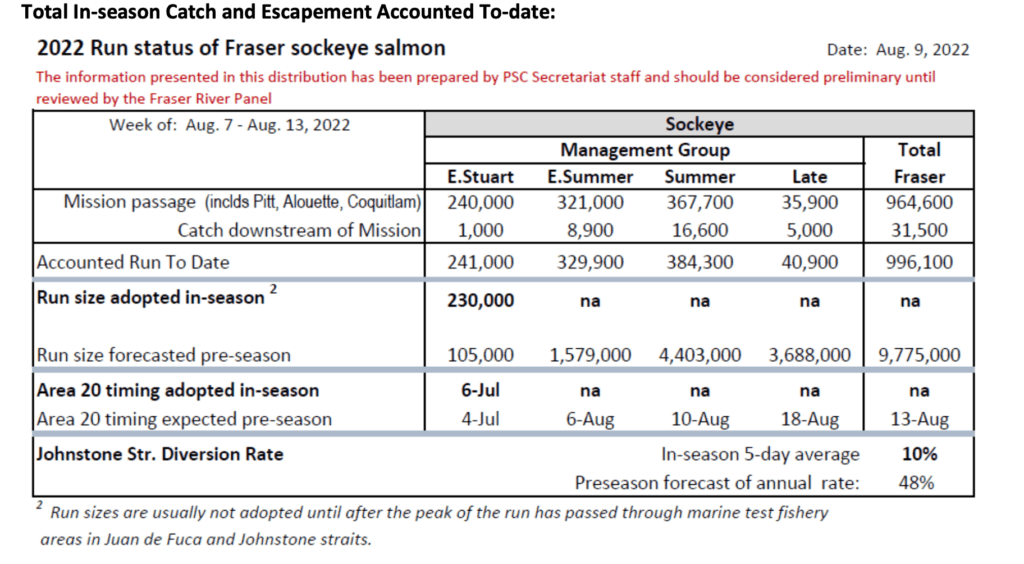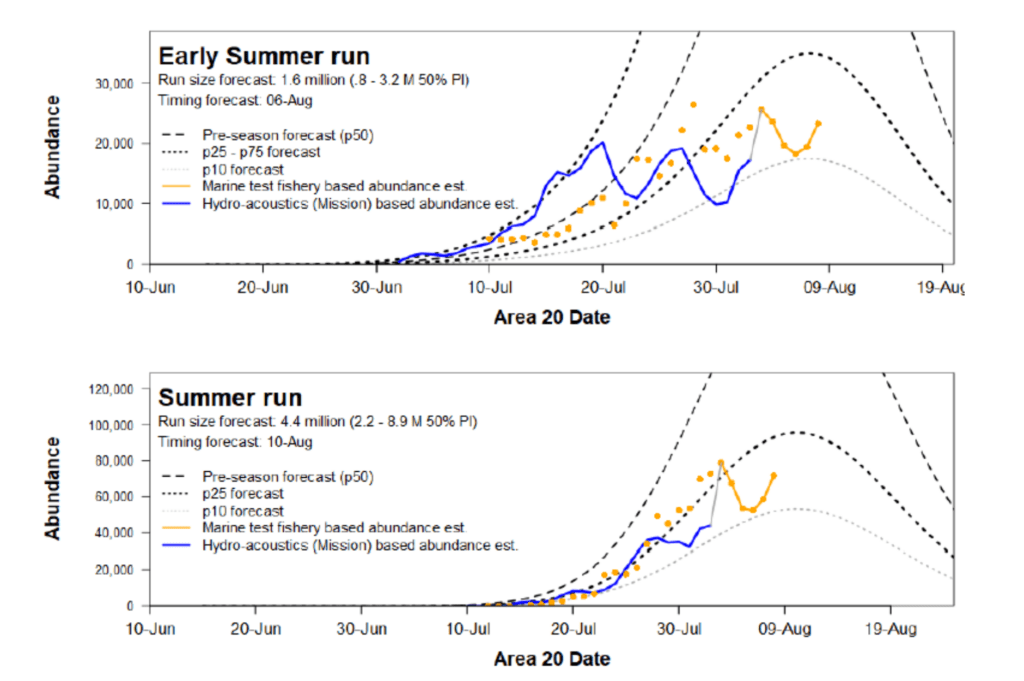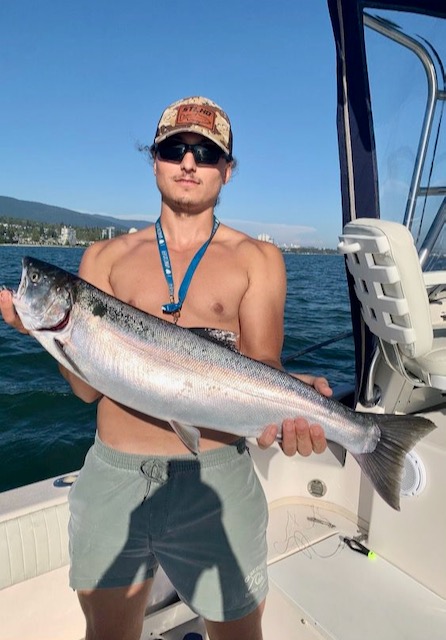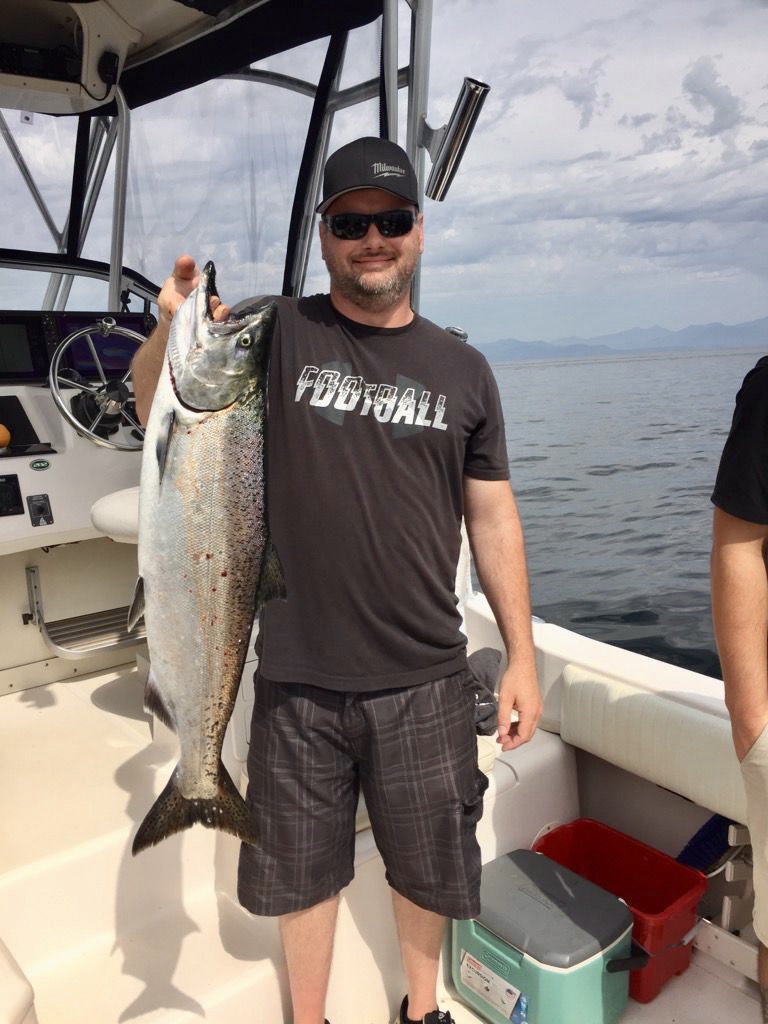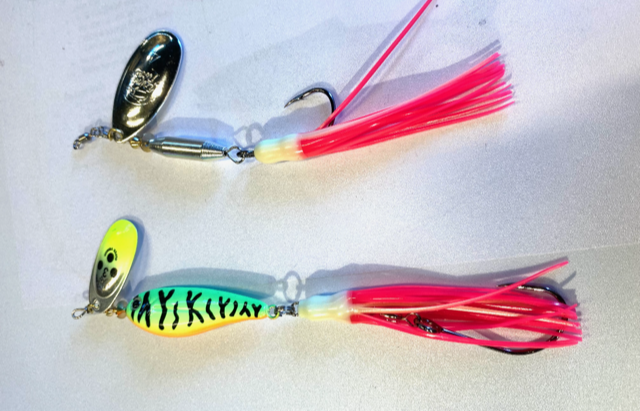OUTLOOK
We have another beautiful weekend coming! Temperatures will be in the mid to low 20s with sun and a mix of cloud. We are also seeing pretty good long-term wind forecasts out in the straight. Time to go fishing!
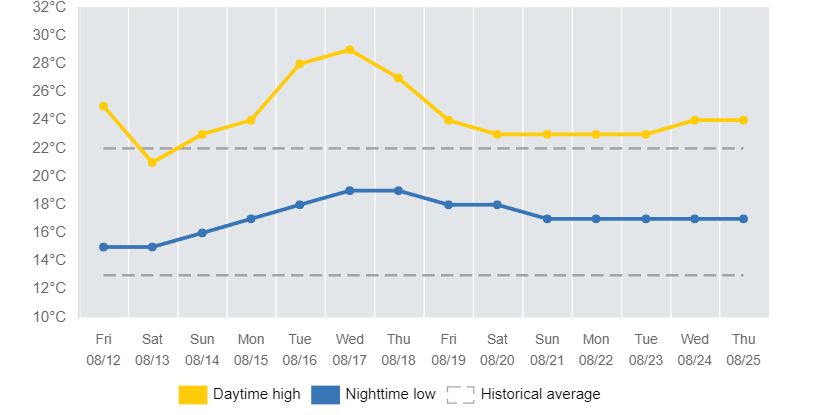
In this week’s report, we have an interesting piece from Sterling on small stream nymphing and when to break out the euro nymphing setup vs the indicators.
For the gear anglers, Gavin is here with an overview of some unique beach fishing lures that you may not have tried. For years the standard buzz bomb and spinner have been the recommended lures of choice for beach fishing around Vancouver. They definitely work but, as many of you know, it pays to get creative. Gavin goes over what he has been using when the old faithfuls are not getting it done. If you are a beach angler, you will want to check it out.
If you are heading out on the ocean, Jason is back this week with a saltwater report where he covers everything from fresh reports off the water to upcoming local chinook openings and a look at sockeye numbers. Spoiler – we still don’t know if there will be an opening!
Back on the river front, we also have a Fraser water level update if you are out looking for sturgeon. Water is dropping and the fishing conditions are getting very good. There is lots of food in the river right now for the fish so bait selection is critical but, if you get it right, fishing is excellent.
Last, Matt has a video report this week where he goes a little deeper on the euro vs indicator nymphing debate, looks at the map for chinook openings, chats sockeye numbers as well as some conservation concerns up past Hope.
Click here for the video version of the report or read below for the articles:
Vancouver Fishing Report- Sockeye Fishing Problems + Euro Nymphing +A Complicated Conservation Issue
On to the report.
CLASSES AND COURSES
Our classes have wrapped up for the summer season but we will be back in the fall with these exciting classes. Call the shop at 604.872.2204 to sign up before they sell out.
INTRODUCTION TO FLY FISHING
This course was specifically designed to give the new fly fisher the basic knowledge, casting skills and fly fishing strategies to effectively fish our local BC waters. This course is comprised of two sessions; 3hr evening seminar and a 3hr casting session. The dates below show the seminar date first and casting date second.
Dates: Sept 20 & 24
Cost: $150.00
Zoom Seminar Time: 6:30pm – 9:30pm
Casting Time(s): 10am – 1pm or 1:30pm -4:30pm
INTRODUCTION TO FLY TYING
There is no greater satisfaction than catching a fish with a fly you tied yourself. This Introduction to Fly Tying course was specifically designed to give you the fundamental skills needed to tie proven fly patterns used here in BC for trout, salmon, and steelhead.
This course consists of 3 sessions; each session is 3hrs.
Students are required to supply their own vise, tools and materials. A 10% discount is available on fly tying materials and tools purchased for the course.
Dates: Sep 27, Oct 4, 11
Cost: $80.00+GST
Time: 6:30pm – 9:30pm
FALL SALMON RIVER FISHING: FLOATS, SPINNERS, & SPOONS
This 3hr evening seminar covers float fishing, spinner fishing and spoon fishing; the three most productive techniques to catch BC salmon in a river. Upgrade your seminar to include a fully guided day on the water, putting into practice your new knowledge with a Pacific Angler guide.
Zoom Seminar: Sep 26, 2022
Cost: $50.00+GS
Zoom Seminar Time: 6:30pm – 9:30pm
INDUSTRY EVENTS AND UPDATES
Join Our Team
Summer is in full swing here at the shop and we are looking for retail associates to join our team for the late summer, fall and beyond! Full and part time positions are available.
Check out the shop posting here.
FRESHWATER FISHING REPORTS
Fraser River Sturgeon Report
Over the last two weeks, the Fraser has dropped substantially. It is currently sitting around 6m which is a great fishable level. I am still expecting it to drop slightly but nothing substantial. We are a couple weeks behind last year but it is safe to say this year’s freshet has now come and gone.
As far as bait goes, right now it is a bit of an odd time. As of late, there hasn’t been a single bait that’s working over the other; each day has been different, so trying various baits right now can be very beneficial. Right now, there are a lot of sockeye in the river. This means the sturgeon will most definitely key in on various salmon parts and roe. Fresh caught salmon heads, belly and uncured roe typically will see the most success and if you are fishing with a couple anglers and have multiple rods out, salmon based baits should make up the majority of offerings. Fresh is always best but I have used frozen salmon heads and uncured roe from seasons past and have seen a lot of success. With all that being said, sturgeon will key in on salmon but running other baits can still be very successful. Pikeminnows and dew worms are both underused baits that have proven to work extremely well. Having a bit of an arsenal with various baits right now is best as offering something a little different can trigger the bite you’re looking for.
Rigging salmon parts can be slightly different as opposed to other baits that are used. I typically like to run a larger hook usually in the 9/0-10/0 range when fishing salmon belly or salmon heads. I will typically run my standard hook in the 7/0-8/0 range when using roe bags. When it comes to salmon belly, I like to just hook it through the skin first and out and fish it as is. Using just strips from the belly of a filleted fish you can use spider thread or other bait tying thread to help keep it on but I haven’t found that I’ve needed it. I also like to fish salmon heads and I prefer to simply hook them through the snout and fish them like that.
As always if you have any further questions or want to talk fishing be sure to come by the shop.
Tight lines!
Ethan Da Silva
Euro Nymphing on Small High Gradient Streams
The delayed melt has meant that a lot of rivers have stayed higher than usual. This is a good thing for the fish. Cooler water, more food getting pushed down stream and the colored glacial water makes them more comfortable. High flows make it tougher to fish with your standard dry fly, indicator, or lighter nymph rig. Cooler water means less bugs on the surface, and when classic nymphing, it is tough to get down deep in the fast-moving water and it’s challenging to mend through heavy flows. This is really where the euro nymphing shines. I love using euro nymphs on smaller coast streams with lots of pacey pocketed water. Heavy nymphs get down quick and you can control the depth effectively. Overall, there’s a lot of technique involved in high stick nymphing but when we have conditions like we are seeing this year it doesn’t take a lot of skill to find a few hungry fish and you can then use these “easy” fish to learn the more complicated nuance of the technique.
I like working upstream as you always want to be working the fish in front of you instead of the fish downstream. (Note: if you encounter other anglers, you should still respect the downstream cycle and avoid low holing)
I’ll flip my setup upstream and pick up my line to get my multicoloured sighter leader vertical once it gets to the 1 PM position. Euro nymphing is all about getting your leader vertical, leading your fly at the same speed as the water and then controlling your depth. You need to add more weight or a heavier nymph if your leader is going horizontal or “floating” with the drift. You want it straight, with as little a bow in you leader as possible.
There are a few ways that you can get geared up for euro nymphing. Using Rio’s Technical Euro Nymph line, which has an integrated leader, is really the best way to go. It has an ultra-thin line meaning that it doesn’t catch water and keeps you directly connected with your leader. Another nice option is using a Euro Nymph shorty attached to your floating line. Last, you can just attach a looped 3′ section of 15 lb mono to the end of your fly line. All options work but using the proper euro nymph line and leader is the best option as you’ll have increased sensitivity, less loops, and less line drag.
The leader setup is quite simple. The key components that you’ll need are 1x-3x two toned indicator (sighter), tippet rings, and 4x-6x fluorocarbon. The simplest way is to just buy the prebuilt Rio Euro Nymph tapered leader as it already has the two-tone indicator built into a leader and comes attached to a tippet ring. Alternatively, you can use 3-5′ of Maxima 15 lb, 2-3′ of 1x-3x two toned indicator, a tippet ring, and 2-3′ of 4x-6x fluorocarbon. I’ve got a photo below of what items pair with what as I understand that it can be confusingly simple. I always have splitshot on me too as sometimes the flow is too fast and the tungsten flies need a little more help getting down.
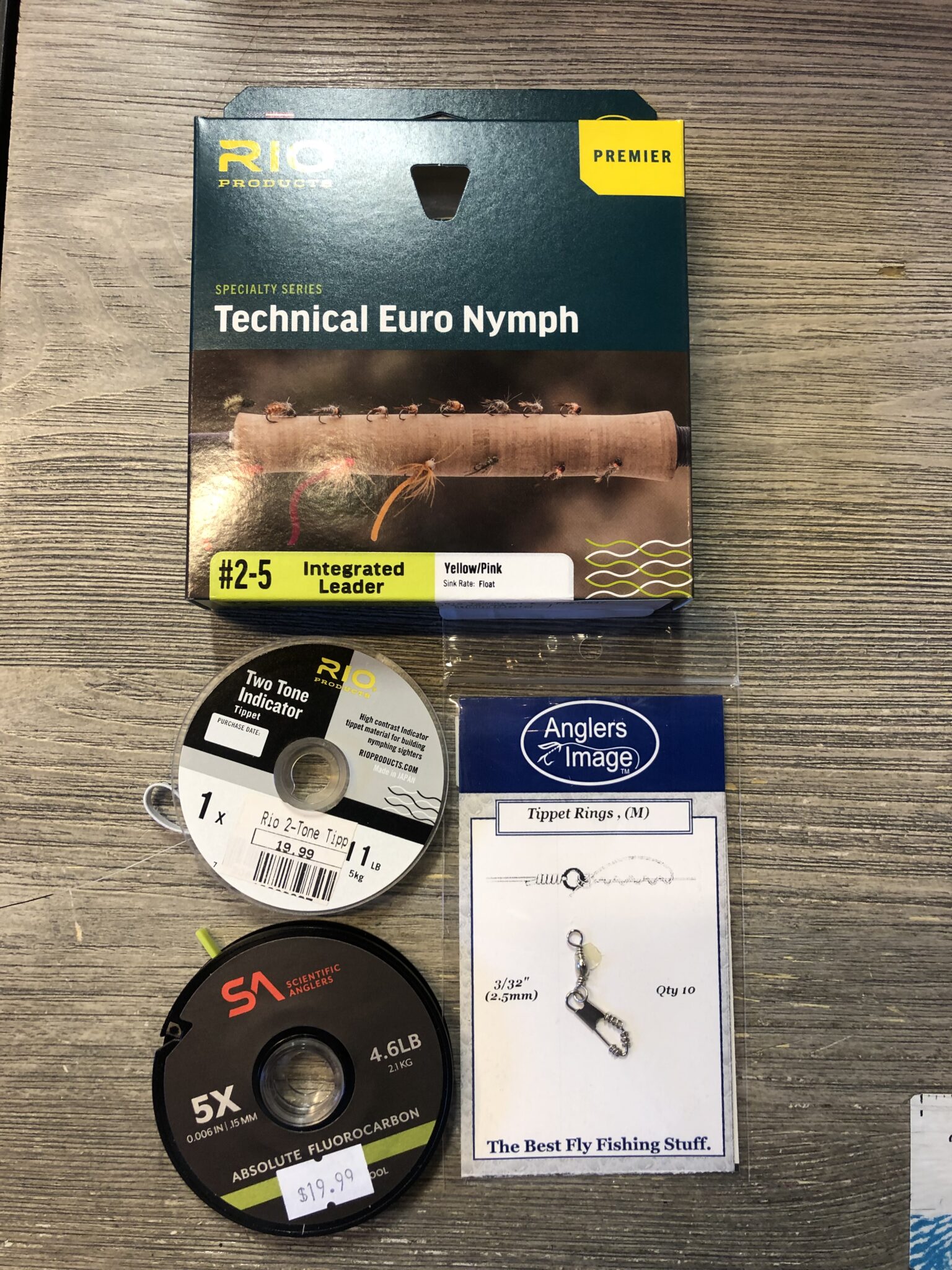

For flies, there’s almost no such thing as a bead that’s too big. I’ll use a fully lead wrapped body fly even if it has a bead that’s over 3.5mm. Use your standard euro nymph flies tied on jig hooks such as hares ears, perdigons, blowtorchs, caddis imitations, and stoneflies. I like slimmer profile flies with hotspots either on the collar or tail. I’d argue that the flies are less important than the presentation and depth. There’s always the hot fly but any grey, black, brown, or olive fly with a touch of pink, orange, or gold should find quite a few fish.
Last, euro nymphing is an awesome technique to do behind sockeye and pink salmon. I ditch the wet flies and use egg imitations in its place. FNF slush jelly and FNF fritz is an awesome product to imitate salmon eggs. I’ll either tie in a 4mm tungsten bead the normal way behind the jig eye or hide the bead underneath the FNF tying product in the middle of the hook. It’s an incredibly effective way to pick out rainbows and bull trout behind the sockeye. Keep in mind that you’d only be able to do this on systems that allow for it.
This technique is very effective on any of your smaller high gradient streams. I lean away from this technique on the medium to larger sized rivers where I need a longer cast to cover the holding lanes.
There are many who debate what method is “best”; to them I say learn them both. Learn what type of water is “best” for each technique then while everyone is arguing go out and catch fish.
Sterling Balzer
SALTWATER FISHING REPORTS
Vancouver Saltwater Salmon Fishing Report
Sockeye Update:
The phones are ringing constantly as everyone wants to know about sockeye. So, let’s get right to it. I was in the DFO & SFAB Sockeye Working Group meeting this past Wednesday and here is what I learned.
Here is the latest info. The estimate of 9.7 million is based on a p50 forecast. The run is tracking closer to the 10% level, especially the past week and a half, so that is called a p10 level. A p10 level will not be sufficient to allow a commercial and recreational harvest and even a p25 level of around 4.35 million in total when the run is said and done, will likely not be enough to trigger an opening.
The main part of the run will be showing up in the next 2 weeks and if things don’t increase to at least a p25 and up to a p50 level by next week then the probability of an opening is very low.
The data coming down the pipe is all tracking p10 to p25, so as each day passes the probability of an opening is certainly decreasing. Sockeye don’t show up 2-3 weeks late, so don’t count on the “they are just late argument.” They have a fairly finite fat reserve and each runs migration window is pretty tight. They have days of reserves, but not weeks. There have also been statistical models run where they pushed the run timing back a week and it still doesn’t look great.
As fishermen, we are always optimistic, and anything can happen, so we hope a huge push shows up that changes things. That being said, it certainly isn’t looking that way as of today. I wish we had better news, but so far this is what the data is telling us. Next meeting with DFO will be next Wednesday and I will have an update in next week’s fishing report.
Coho & Chinook Update:
Locally the coho fishing has been decent. We have been getting some nice hatchery coho along the West Van shoreline, 25-65 on the riggers, on white hootchies and smaller spoons.
Chinook fishing has also picked up as more Fraser chinook get pushed over to West Van. These aren’t stocks of concern. These are the more prevalent Thompson chinook that usually run in that 8-15 pound range. Remember that chinook open up from Point Atkinson to the Cap Mouth (Area 28-6 and 28-9) for 1 a day from 62-80 cm as of August 13, so this Saturday morning! These fish are shallow, just like the coho, 25-65 on the riggers, so we often catch them while coho fishing. If you want to up your chinook encounters, fish some anchovies or herring in a Rhys Davis teaser head as these chinook respond well to bait.
Chinook fishing over at Gabriola and Nanaimo continues to be productive as well. We have been local quite a bit this past week because of the NW winds, but when we have made it across the fishing has been good. These fish are deep, 250-300 on the rigger in the spots we like to fish, so glow flashers and glow hootchies are always a good place to start. Last year this fishery went right until September and it should this year as well.
September 1st, the mouth of the Fraser area will open for 2 chinook a day, just like previous years. I think it will be quite a bit better than last year, which was unusually slow, as we have been catching quite a few white chinook all summer long. The increased production from the Chilliwack hatchery should provide some better fall Fraser mouth fishing. Remember the N Arm is now an SRKW sanctuary, so don’t plan on fishing there September 1st. I will report on this in more detail in upcoming reports.
See you in the shop or on the water.
Jason Tonelli
Unique Gear for Beach Fishing
Ambleside is a unique fishery that can prove to be challenging most days. Spooky fish and high pressure require unique gear to turn heads on the beach. While all of your standard buzz bombs, zingers and spoons work, there are a few select lures that have been lighting up Ambleside in the past few years. Specifically, the “Spinoochty”, or the Spinner Hootchy, which is essentially what it sounds like; a spinner with a trailing hootchy. Something about the vibration in combination with the tantalizing hootchy legs drive Ambleside coho crazy.
Rigging of the hootchy is quite simple – Thread it onto the hook of the spinner of choice, a small dab of super glue on the tip of the hootchy against the eye of the hook, helps it stay inline.
We also have a limited supply of pink hootchies rigged with 2 swivels, you can attach these onto any spoon or spinner with a split ring.
Remember to use the smaller 2.5 hootchies instead of the standard 4.5 salmon hootchies.
Typically, just the spinner is not heavy enough to get the distance needed at the beach, most successful anglers opt to use a carolina rig with the Spinootchy. Sliding egg sinker on the mainline down to a swivel and 3ft of 8-15lb fluorocarbon leader to the lure.
Give it a shot,
Gavin Lau


